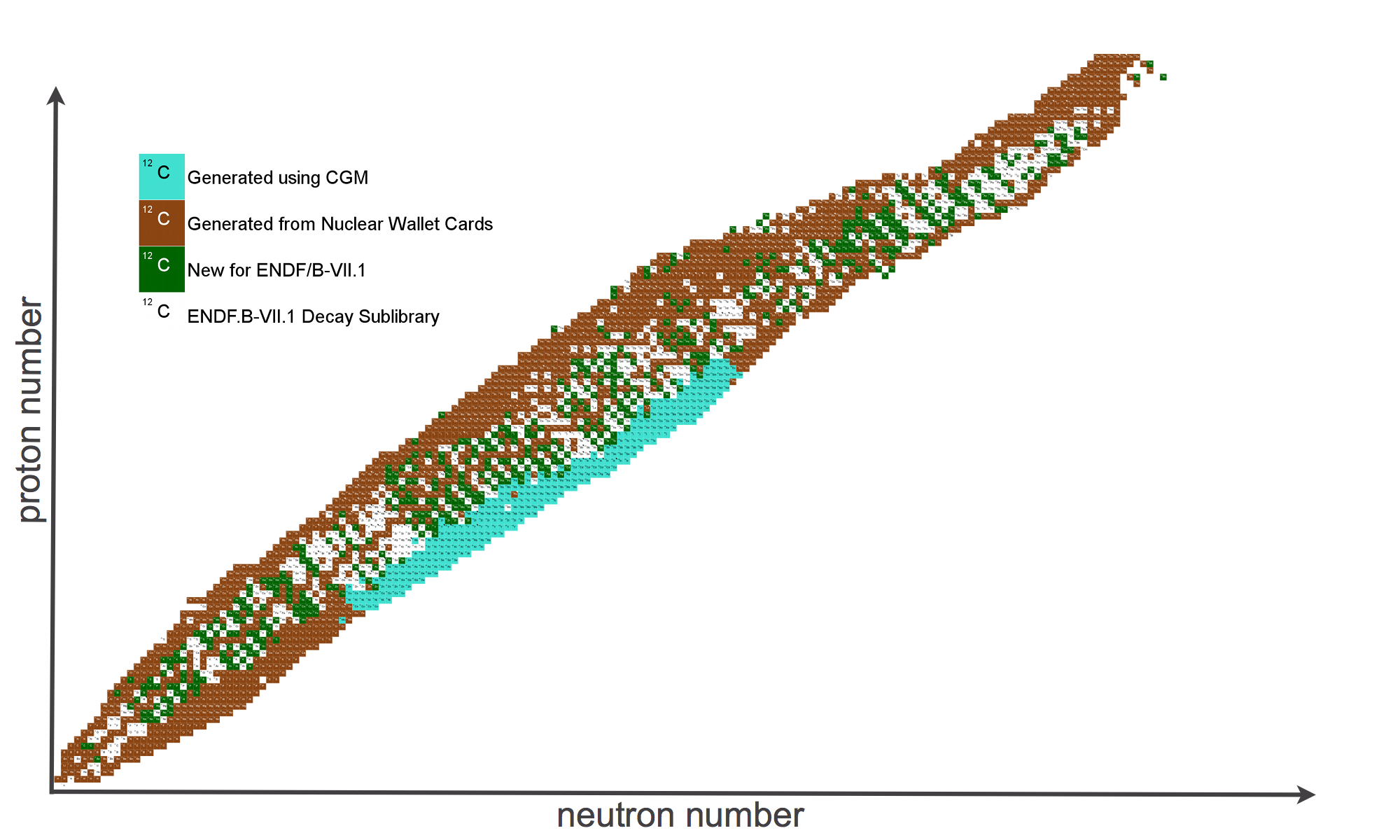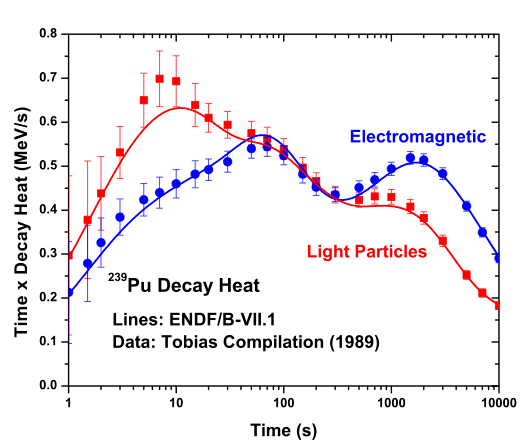The ENDF/B-VII.1 sublibrary is based on decay data in the Evaluated Nuclear Structure Data File (ENSDF), translated into the ENDF-6 format. The data in ENSDF is continuously being updated and re-evaluated, with each mass chain revisited, on average, every 7 years. Thus, a significant amount of the data incorporated in ENDF/B-VII.0 has been re-evaluated in ENDF/B-VII.1. Included in the re-evaluation are 1927 new decay data sets published since the release of ENDF/B-VII.0. For nuclei located far from the valley of stability, often knowledge of a complete decay scheme is lacking. In these cases, basic information on the decay properties (T1/2, Q value, decay modes) was taken from the latest version of the Nuclear Wallet Cards (2011). For 344 nuclei in the neutron-rich region with significant fission fragment yields, incomplete information on the decay is supplemented with state-of-the-art theoretical calculations from the Cascading Gamma Multiplicity (CGM) model.
The new ENDF/B-VII.1 decay sublibrary contains data for 3,817 materials, where each material corresponds to a ground state or long-lived isomeric level. In comparison, VI.8 covered 979 materials, while VII.0 and JEFF-3.1 contain 3838 and 3852 materials, respectively. The early version of the library, VI.8, was limited to materials relevant to applications, focusing on the actinides and fission fragments. The more recent libraries have expanded to include all known nuclei across the nuclear chart. The differences between the number of materials in VII.0, VII.1 and JEFF-3.1 correspond to the number of isomeric states included in the library. JEFF-3.1 and VII.0 cover all levels (ground state and isomeric) given in the 2003 NuBase evaluation. For VII.1, we adopted the general policy not to include isomers
- with half-lives shorter than 1 ms
- with IT as the sole decay mode and
- were not in VI.8.
The 1st stipulation stems from the consideration that one millisecond is the lower limit for a half-life in beta-decay. The 2nd condition ensures that omission of any isomers does not alter the decay path. VII.1 contains all of the isomers in VI.8. The isomers absent in VII.1 compared with VII.0 are those with 100% IT decay and lifetimes <1 ms. We expect our policy on isomers preserves the physics output and keeps the time for a computer code to solve the differential equations for applications to a minimum.
We note that the ENDF/B-VII.1 decay sublibrary is slated to be included in the next release of the ORIGEN code included in the SCALE package (https://scale.ornl.gov).
We want to ensure that ENDF/B-VII.1 provides the best possible data to our users. If you find any issues/deficiencies, please note them on the decay sublibrary issue tracker.


